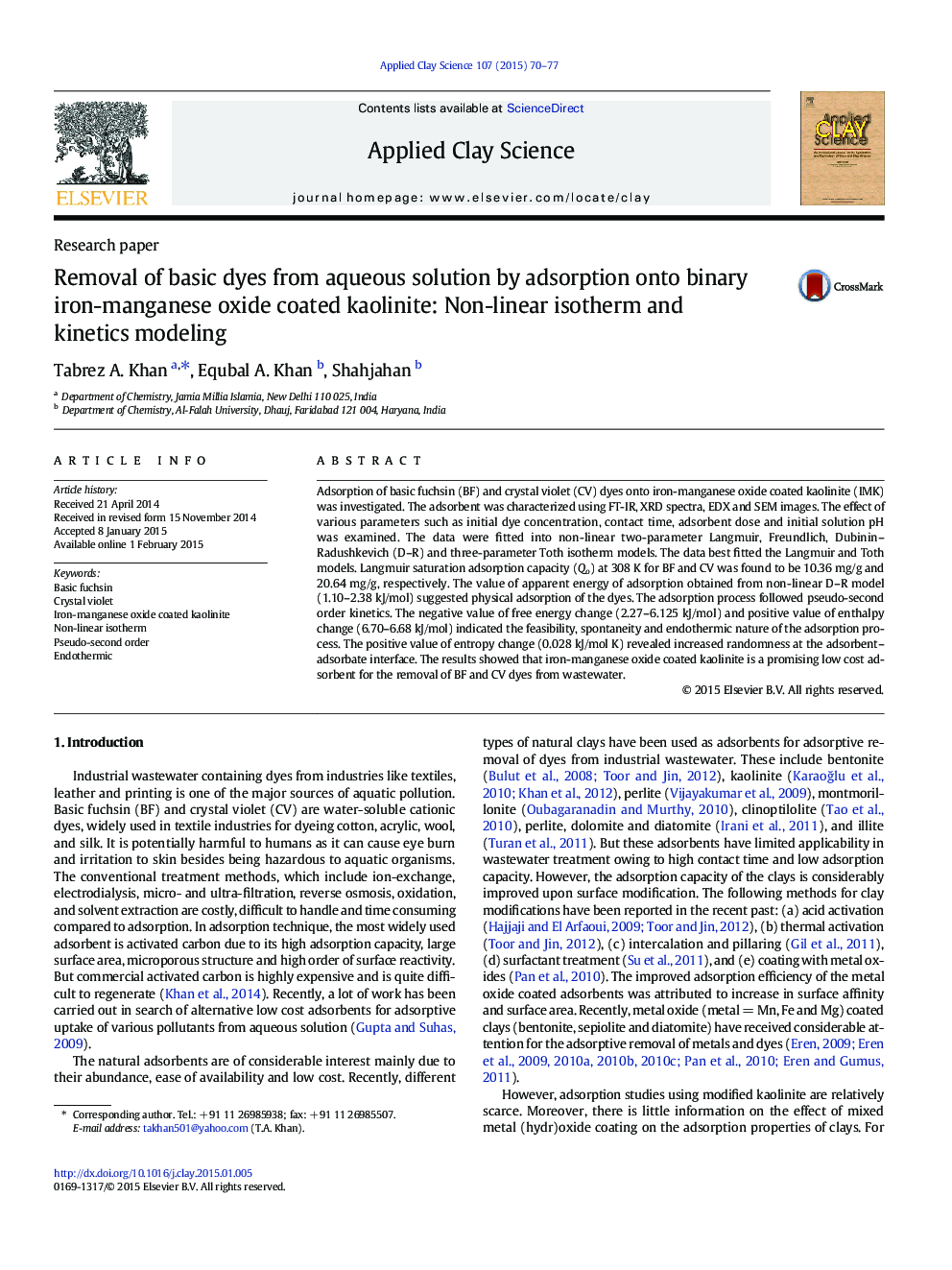| Article ID | Journal | Published Year | Pages | File Type |
|---|---|---|---|---|
| 1694529 | Applied Clay Science | 2015 | 8 Pages |
•Iron-manganese oxide-coated kaolinite removes cationic dyes from aqueous solution.•The data best fits the Langmuir and Toth isotherm models for both dyes.•Basic fuchsin and crystal violet adsorption data obeys pseudo-second order kinetics.•Modified kaolinite proved to be a promising adsorbent for basic dye uptake.
Adsorption of basic fuchsin (BF) and crystal violet (CV) dyes onto iron-manganese oxide coated kaolinite (IMK) was investigated. The adsorbent was characterized using FT-IR, XRD spectra, EDX and SEM images. The effect of various parameters such as initial dye concentration, contact time, adsorbent dose and initial solution pH was examined. The data were fitted into non-linear two-parameter Langmuir, Freundlich, Dubinin–Radushkevich (D–R) and three-parameter Toth isotherm models. The data best fitted the Langmuir and Toth models. Langmuir saturation adsorption capacity (Qo) at 308 K for BF and CV was found to be 10.36 mg/g and 20.64 mg/g, respectively. The value of apparent energy of adsorption obtained from non-linear D–R model (1.10–2.38 kJ/mol) suggested physical adsorption of the dyes. The adsorption process followed pseudo-second order kinetics. The negative value of free energy change (2.27–6.125 kJ/mol) and positive value of enthalpy change (6.70–6.68 kJ/mol) indicated the feasibility, spontaneity and endothermic nature of the adsorption process. The positive value of entropy change (0.028 kJ/mol K) revealed increased randomness at the adsorbent–adsorbate interface. The results showed that iron-manganese oxide coated kaolinite is a promising low cost adsorbent for the removal of BF and CV dyes from wastewater.
